The administrative center of the Kashkadarya region is the city of Karshi. The ancient city celebrated its 2700th anniversary in 2006 under the auspices of UNESCO. There is a legend that Alexander the Great himself visited the city. 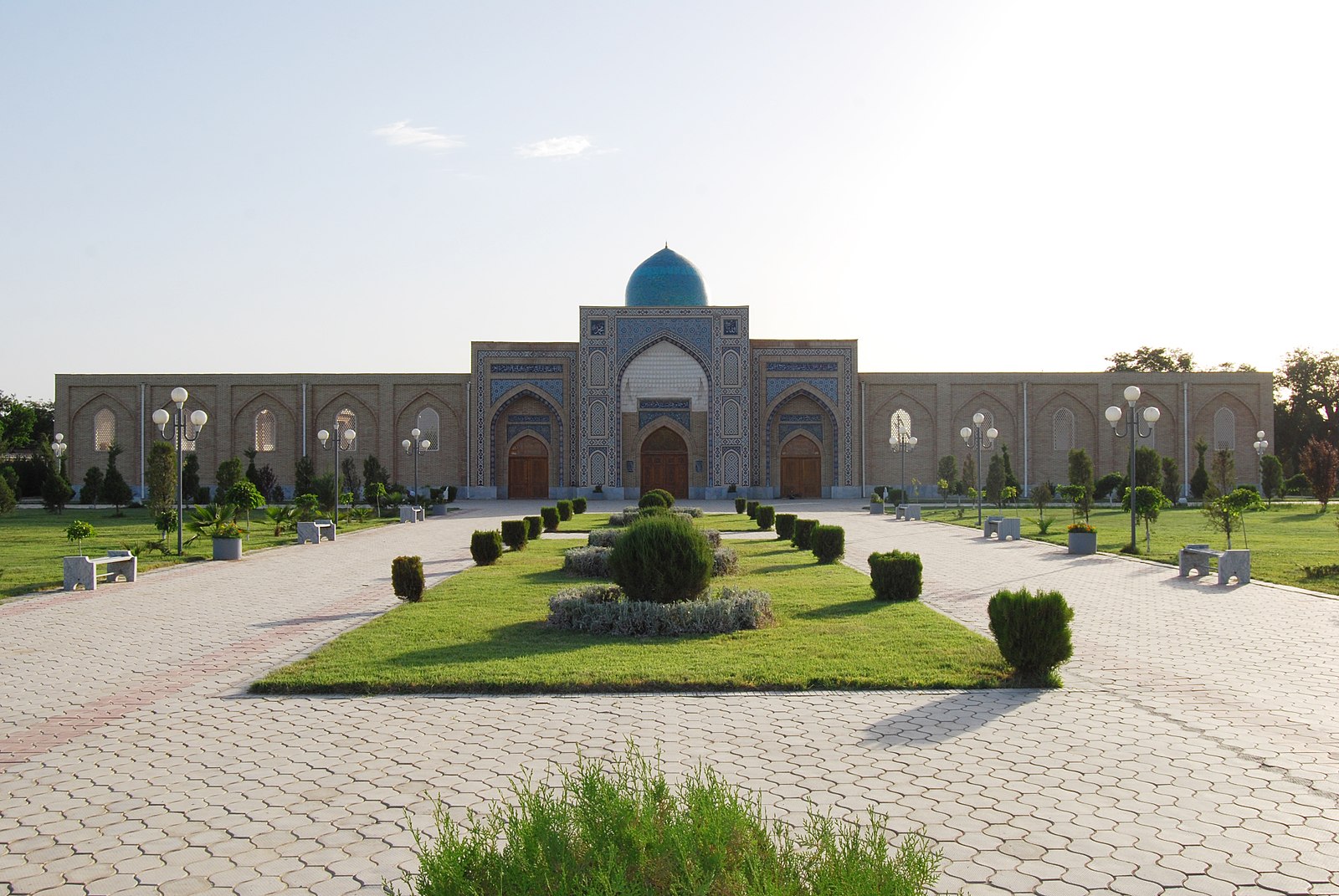
The history of the name of this ancient city is interesting. Babur mentioned the history of the toponym in his work "Babur-name". He wrote: "Another district is Karshi, which is also called Nesef and Nekhsheb. Karshi is a Mongolian name; a castle or mausoleum in the Mongolian language is "Karshi". This name reflects the construction activity of Kepekkhan, who founded his residence on this place. Later, under Amir Timur, a defensive wall was erected around the city.
Karshi is an interesting place where new and old, modern new buildings and ancient monuments are intertwined. Here you can see several places of worship that successfully coexist with residential buildings and urban infrastructure.
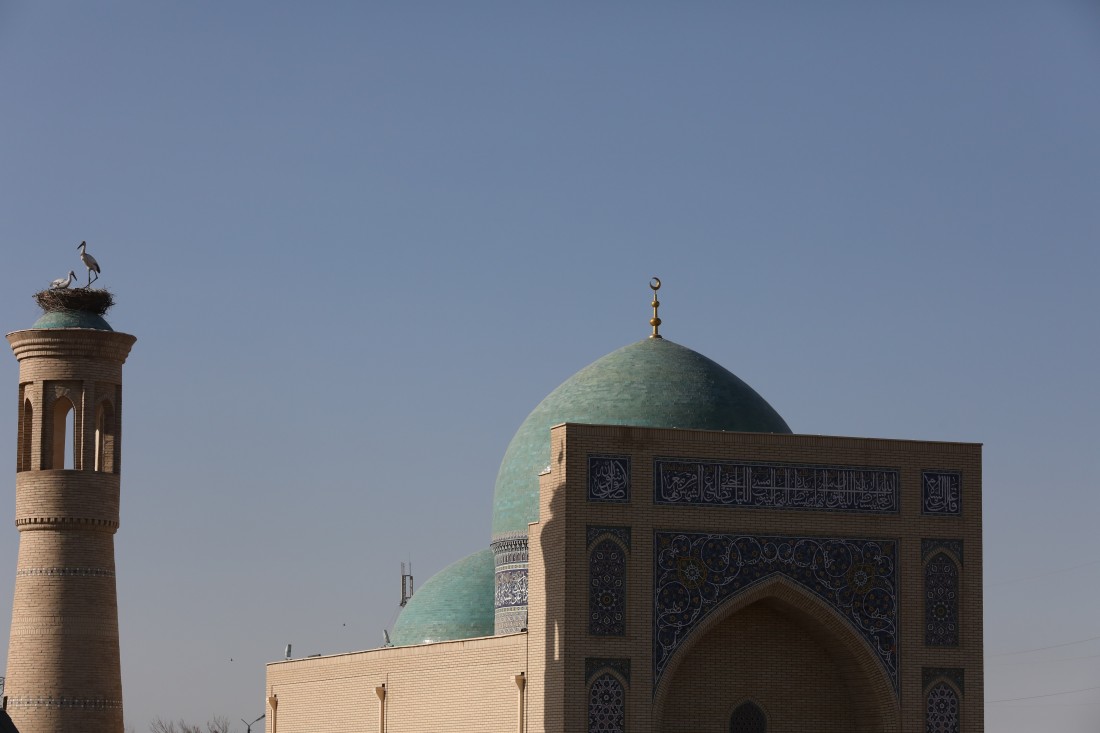
1.Abu Ubaid ibn al-Jarroh Memorial Complex. Ubayda al-Jarroh was a famous commander, politician, associate and physician of the Prophet Muhammad. According to legend, he was able to heal a Prophet wounded by an arrow. The complex was built in the XV century, and renovated recently. On the territory of the mausoleum you can see a minaret with figures of storks, an incredibly clean and transparent pond, ancient burials, found artifacts, an old plane tree. Near the entrance to the complex there is a wide alley with flower beds.
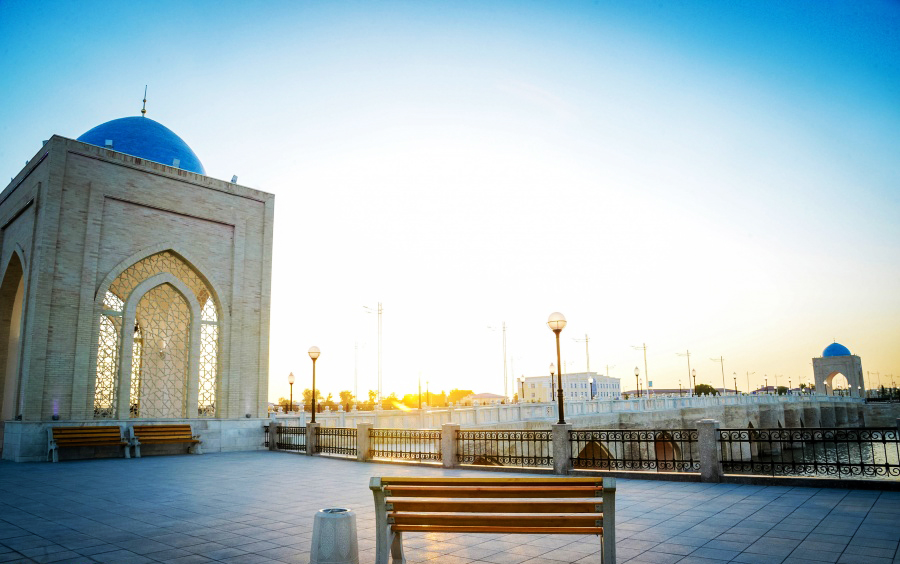
2. Karshi bridge. An ancient bridge with a rich history. It has several names: Amir Timur Bridge, Sheibanid Bridge, Kashkadarya Bridge, Nikolaevsky Bridge. The structure was built in 1583 in a typical Persian style. The construction was launched on the initiative of Abdullah Khan II, for whom it was important to create a convenient passage in the city not only for pedestrians, but also for trade caravans. At that time, Karshi was an important stopping point for merchants. Since then, the bridge has been a symbol of the city. It is 122 meters long, 8 meters wide, 5 meters high above the water and 10 arches.
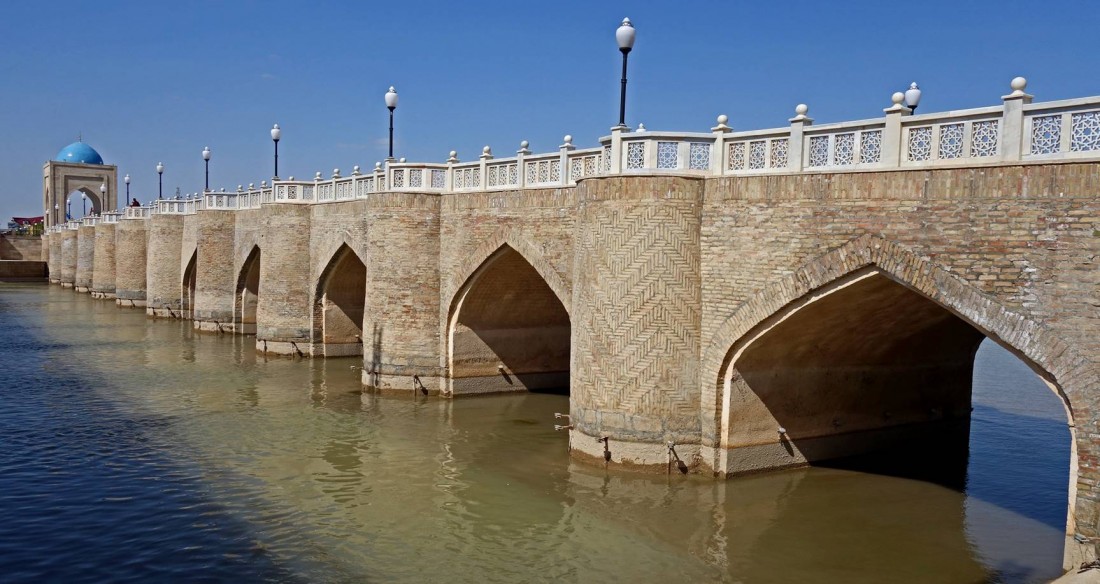
3. Madrasah and mosque of Odina. The first madrassas and a mosque for women were built in this city. The complex was built in the XVI century on the site of the destroyed Kebek Khan Palace. In the madrasah, women were taught sciences and religion. People came to the mosque to pray and thank Allah for their children and loved ones. Such a religious complex was the only one in Central Asia, which had no analogues anywhere else. Currently, a museum has been opened in the mosque, telling about the rich history of the Sheibanid dynasty, whose rulers and khans left a significant contribution to the history of Islam.
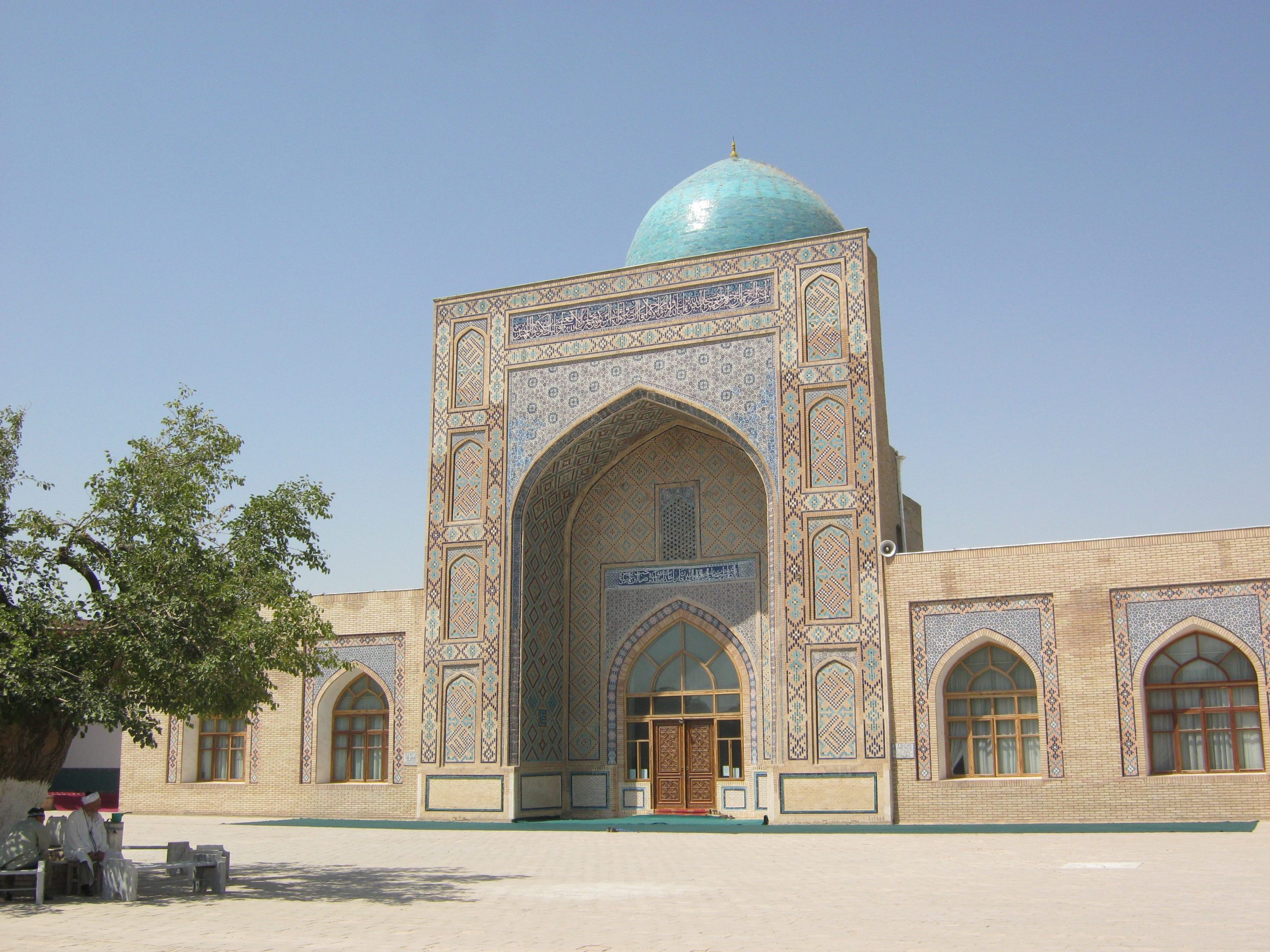
4. Kok-Gumbaz Mosque. The cathedral mosque in Karshi was built at the end of the XVI century. The name of the mosque translates as "blue dome". The building impresses with its grandeur and beauty, which surprises how people of that distant time were able to erect such beauty.
5. Kilichboy Madrasah. The building was built in 1914, in appearance it is very similar to the madrasah of Huzh Abdulaziz. 12 classrooms in the madrasah are located on the first and second floors. Inside the courtyard, a drainage system was carried out. Impressive are the solid walls built of burnt brick, which attract attention from afar. Currently, there is a museum in the madrasah.
6. Khoja Abdulaziz Madrasah. The architectural monument was built in 1909, during the reign of Bukhara Emir Seyid Abdulahad Khan. At the beginning of the XX century, the madrasah was a popular educational institution, where students from all over the Bukhara Emirate came. From 1975 to 2007 . The Kashkadarya Museum of Local Lore operated in the madrasah.
7. Sardoba - a reservoir for collecting water, was built in the XIV century. Since the climate in the region is quite arid, the structure allowed collecting rainwater. Sardoba operated until the beginning of the XX century, now it is empty and you can go down inside. There are amazing acoustics inside the structure, as well as an unusual wooden fragment peeking out of the water intake hole.
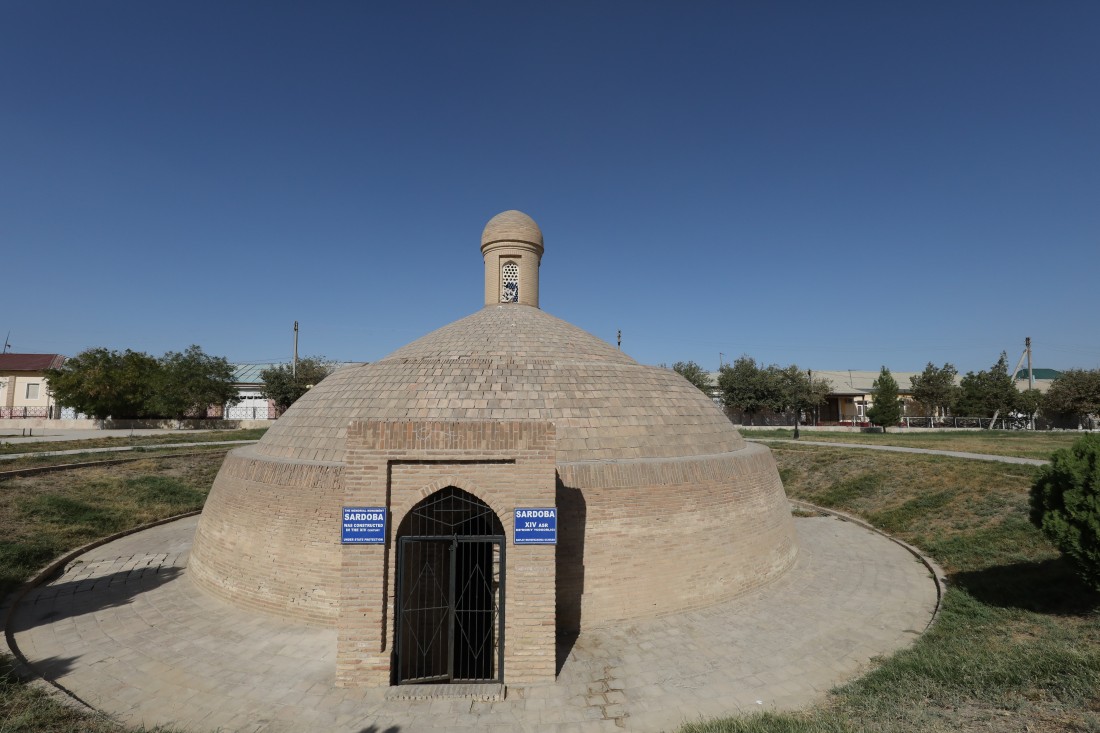
8. Karshi baths. The most interesting object of the city are medieval baths. Their construction dates back to the XVI century. The elders say that the baths were designed in such a way that the heat was stored from one small stove. Inside and outside the baths look very unusual, which arouses genuine interest.
Karshi is a very fascinating city. Ancient architecture, beautiful streets, fountains in the city center, the goodwill of citizens and delicious dastarkhan will appeal to everyone. Let this amazing city become a must-visit destination on your itinerary.
Working hours: 9:00 AM - 6:00 PM, Mon-Fri
For any questions
ПОЛЬЗОВАТЕЛЬСКОЕ СОГЛАШЕНИЕ
1. Определение
Настоящее Пользовательское соглашение (далее — Соглашение) является Публичной офертой в соответствии со статьёй 367 Гражданского кодекса Республики Узбекистан от 21.12.1995 (https://lex.uz/ru/docs/111181#162763) и регулирует порядок использования материалов и Сервисов сайта Государственного унитарного предприятия «Национальный PR-центр» (далее — Предприятие), размещённого на веб-сайте и поддоменах Национального Туристического Информационного Центра: https://uzbekistan.travel/ (далее — Сайт).
Посетитель и (или) Пользователь подтверждает, что ознакомлен, полностью и безоговорочно принимает все условия настоящего Соглашения и обязуется их соблюдать.
Использование Сайта Пользователем означает полное принятие данного Соглашения «как есть» в форме акцепта.
Соглашение вступает в силу с момента посещения любой страницы Сайта и (или) регистрации на Сайте и действует бессрочно во время пользования Сервисами Сайта.
Настоящее Соглашение обязательно для исполнения всеми Посетителями и Пользователями без каких-либо изъятий и дополнительных согласований.
Пользователь обязуется самостоятельно проверять актуальную редакцию Соглашения на Сайте перед использованием Сервисов.
2. Предмет Соглашения
Предметом настоящего Соглашения являются правила использования материалов Сайта и предоставление Посетителю и (или) Пользователю возможности использования Сервисов Сайта.
Предприятие является правообладателем исключительных прав на Сайт в целом и на его составные части, включая все виды контента: логотипы, товарные знаки, тексты, статьи, аннотации, иллюстрации, фотографии, графику, аудио- и видеофайлы, пользовательские интерфейсы, дизайн, структуру, программы, базы данных.
Я прочитал(а) и соглашаюсь с условиями использования сайта и политикой конфиденциальности.
